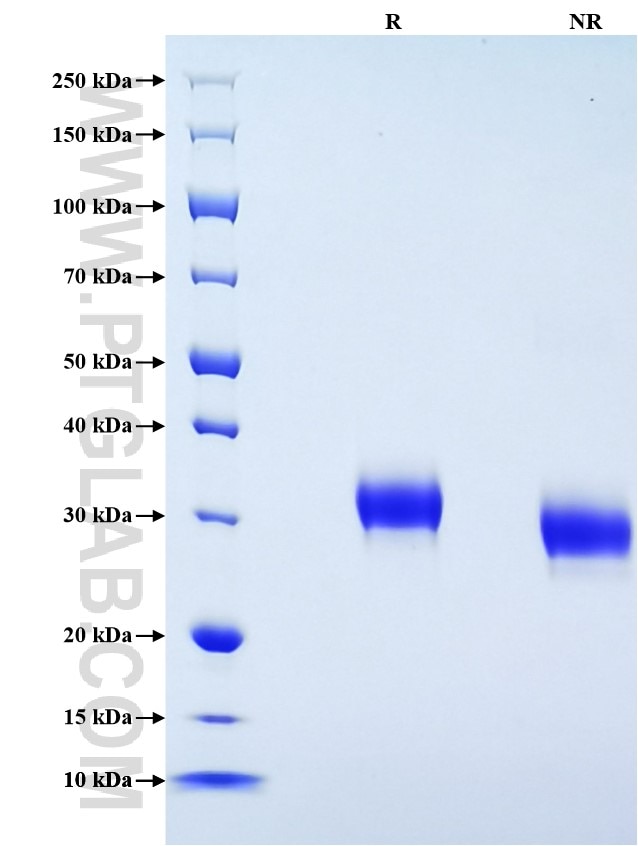Recombinant Human CD2 protein (His Tag)
Species
Human
Purity
>90 %, SDS-PAGE
Tag
His Tag
Activity
not tested
Cat no : Eg1271
Validation Data Gallery
Product Information
| Purity | >90 %, SDS-PAGE |
| Endotoxin | <0.1 EU/μg protein, LAL method |
| Activity |
Not tested |
| Expression | HEK293-derived Human CD2 protein Lys25-Asp209 (Accession# P06729) with a His tag at the C-terminus. |
| GeneID | 914 |
| Accession | P06729 |
| PredictedSize | 22.3kDa |
| SDS-PAGE | 29-35 kDa, reducing (R) conditions |
| Formulation | Lyophilized from 0.22 μm filtered solution in PBS, pH 7.4. Normally 5% trehalose and 5% mannitol are added as protectants before lyophilization. |
| Reconstitution | Briefly centrifuge the tube before opening. Reconstitute at 0.1-0.5 mg/mL in sterile water. |
| Storage Conditions |
It is recommended that the protein be aliquoted for optimal storage. Avoid repeated freeze-thaw cycles.
|
| Shipping | The product is shipped at ambient temperature. Upon receipt, store it immediately at the recommended temperature. |
Background
CD2 (also known as LFA-2, T-cell surface antigen T11/Leu-5, LFA-3 receptor, E-rosette receptor) is a member of the immunoglobulin superfamily. It is a transmembrane glycoprotein present on T cells, NK cells, thymocytes and dendritic cells. CD2 functions as an adhesion molecule, binding with lymphocyte function-associated antigen (LFA-3/CD58) in humans. It has also been reported to interact with CD48 and CD59. CD2 plays important roles in cell adhesion between T-cells/NK cells and other cell types, T-cell activation, NK-cell activation, and thymocyte development.
References:
1. P A van der Merwe, et al. (1994) Biochemistry. 33(33):10149-60. 2. S J Davis, et al. (1996) Immunol Today. 17(4):177-87. 3. A L Wilkins, et al. (2003) Curr Protein Pept Sci. 4(5):367-73. 4. Christian Binder, et al. (2020) Front Immunol. 11:1090.

